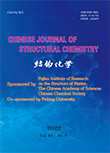Homology Modeling, Molecular Docking, and Molecular Dynamic Simulation of the Binding Mode of PA-1 and Botrytis cinerea PDHc-E1
RAO Di, HE Jun-Bo*, FENG Jiang-Tao, ZHANG Wei-Nong, CAI Meng and HE Hong-Wu
Chin. J. Struct. Chem. 2022, 41, 2203227-2203234 DOI: 10.14102/j.cnki.0254-5861.2011-3335
March 15, 2022
5-iodo-1,2,3-triazole, Botrytis cinerea, PDHc-E1 inhibitor, homology modeling, molecular dynamic simulation
ABSTRACT
To reveal the
potential fungicidal mechanism of
5-((4-((4-chlorophenoxy)methyl)-5-iodo-1H-1,2,3- triazole-1-yl)methyl)-2-methylpyrimidin-4-amine
(PA-1) against Botrytis cinerea (B. cinerea), the
three-dimensional structure of B. cinerea pyruvate dehydrogenase complex
E1 component (PDHc-E1) is homology modeled, as the PA-1 shows potent E.
coli PDHc-E1 and B. cinerea inhibition. Subsequent molecular docking
indicates the PA-1 can tightly bind to B. cinerea PDHc-E1.
Molecular dynamic simulation and MM-PBSA calculation both demonstrate that two
intermolecular interactions, π-π stacking
and hydrophobic forces, provide the most contributions to the binding of PA-1 and B. cinerea PDHc-E1. Furthermore, the halogen bonding interaction between
the iodine atom in PA-1 and OH in Ser181 is also crucial. The present
study provides a valuable attempt to homology model the structure of B.
cinerea PDHc-E1 and some key factors for the rational structure
optimization of PA-1.








